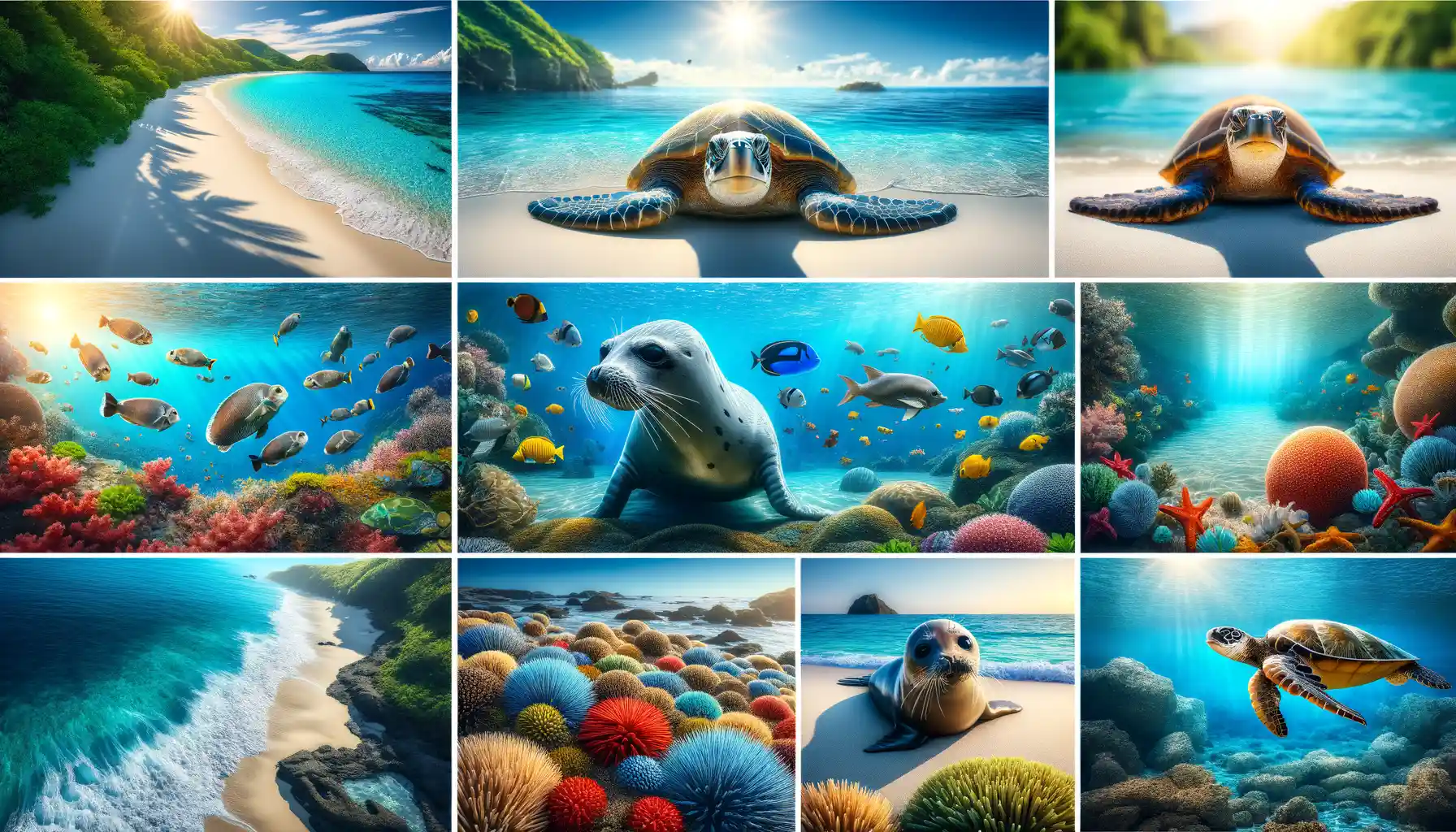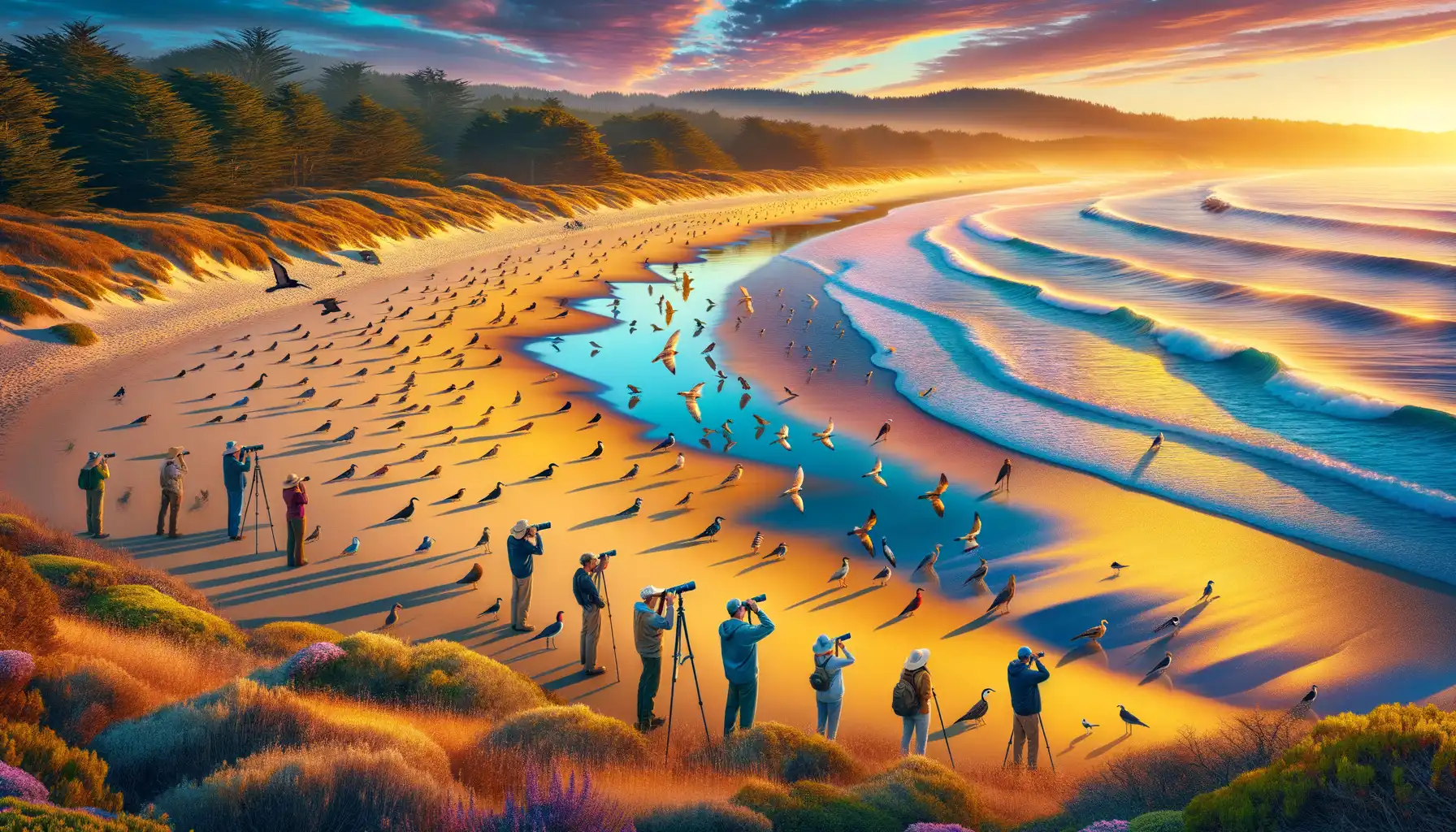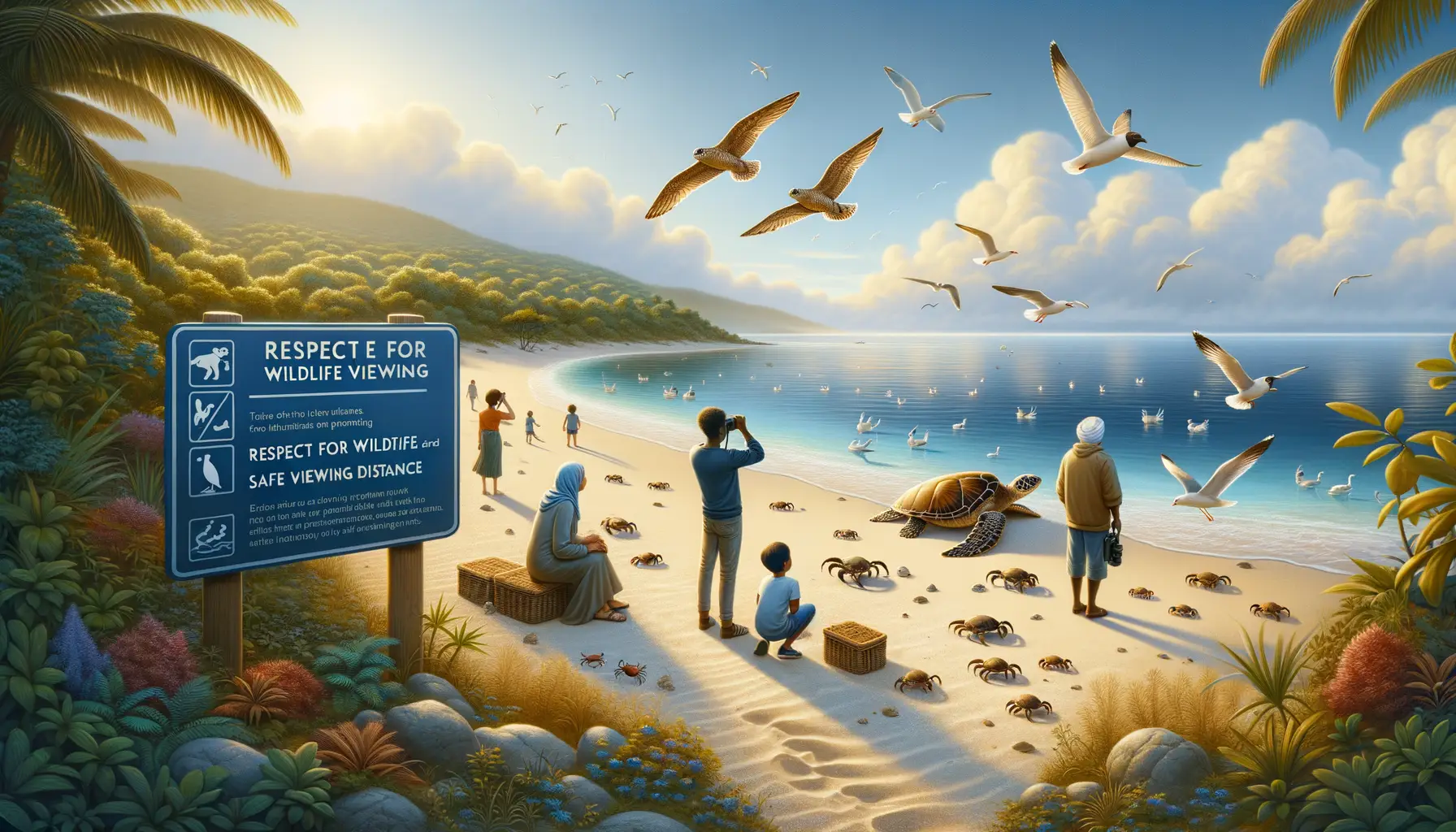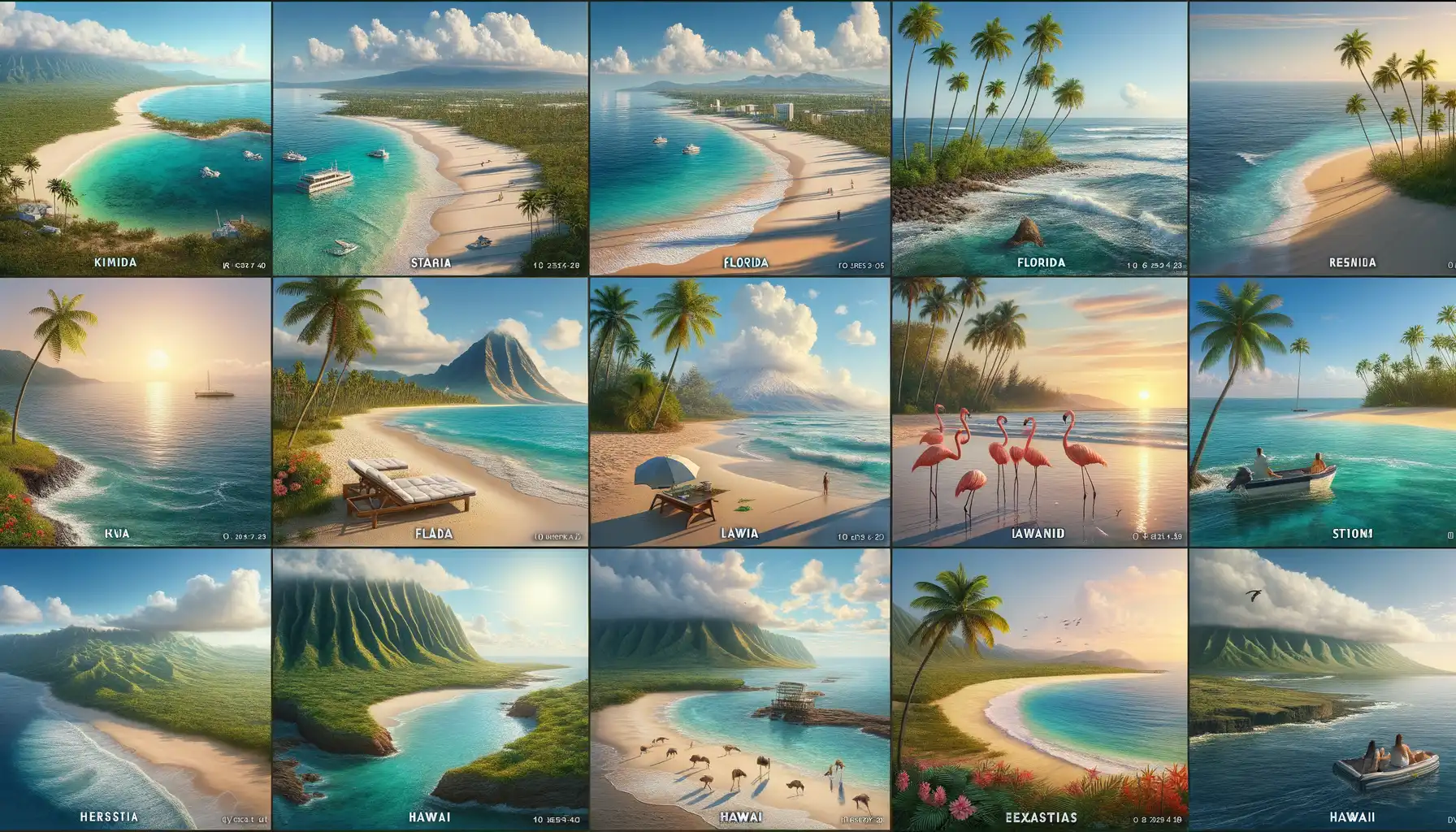Unique Wildlife Experiences on Australian Beaches
Picture this: golden sands stretching as far as the eye can see, turquoise waves lapping at the shore, and suddenly—movement. A curious creature pokes its head from the sand, or a fin slices through the water’s surface. Welcome to Australia’s beaches, where wildlife experiences aren’t just possible—they’re downright magical.
Watch Baby Turtles Begin Their Journey
Along Queensland’s coastline, particularly at Mon Repos Beach, magic unfolds every summer. Imagine standing under a star-studded sky, holding your breath as tiny hatchlings emerge from their nests. With instincts honed over millennia, these fragile beings scuttle towards the moonlit ocean. It’s a spectacle of survival, bravery, and endless hope.
A Seaside Safari of Kangaroos and Beyond
Ever seen kangaroos lounging seaside? Head to Cape Hillsborough National Park in the early dawn, where mobs of kangaroos hop along the shores like they own the place. And that’s not all. Keep your eyes peeled for dolphins surfing the waves at Jervis Bay, or stingrays gliding gracefully under the clear shallows at Hamelin Bay. These moments feel straight out of a wildlife documentary.
Some highlights you shouldn’t miss:
- Spot playful sea lions basking on the sands of Seal Bay in South Australia.
- Snorkel alongside colourful fish and timid reef sharks at Ningaloo Reef.
- Witness migratory whales breaching off the beaches of Hervey Bay.
Where else could you experience such a kaleidoscope of wild adventures right by the sea?
Top Beaches for Marine Life Encounters

Australia’s beaches aren’t just for surfers and sunbathers—they’re also where the ocean comes alive with some of nature’s most incredible creatures. Slip into crystal-clear waters, and you might find yourself face-to-face with a curious sea turtle or mesmerized by the graceful glide of a manta ray. Let’s dive into where these unforgettable marine life encounters happen.
Where the Wild Meets the Waves
Want to snorkel alongside a rainbow of fish or hear the haunting songs of humpback whales? Head to Ningaloo Reef in Western Australia. This UNESCO-listed spot is famous for its gentle giants: whale sharks. From March to August, these graceful creatures migrate through, offering snorkelers a once-in-a-lifetime experience.
For an intimate introduction to playful dolphins, visit Monkey Mia Beach. Here, the resident bottlenose dolphins have been interacting with humans for decades. Their charm is contagious, turning even the most reserved beachgoer into an instant fan.
Find Magic Beneath the Surface
- Love turtles? Visit Heron Island, Queensland during nesting season (November to March) for a front-row seat to their ancient ritual.
- Swim with dazzling coral gardens teeming with marine life at Lady Elliot Island. Known as the “home of the manta ray,” this eco-paradise is pure underwater magic.
- Spot reef sharks gliding gracefully in the shallow lagoons at Coral Bay, another treasure on the Ningaloo Coast.
Be warned—once you’ve seen Australia’s marine world, no other ocean quite compares!
Beaches Perfect for Birdwatching and Coastal Fauna

Where Feathers Meet Waves: Australia’s Winged Wonders
Picture this: the rhythmic crash of waves, the warm kiss of the sun, and the delicate silhouettes of coastal birds gliding just above the tide. Australia’s beaches are more than just seaside escapes—they’re veritable kingdoms of birdlife. Whether you’re a seasoned birder or just someone mesmerized by wings in motion, these shores won’t disappoint.
Some spots feel almost magical, as if the birds themselves are putting on a carefully choreographed dance just for you. At Eyre Peninsula, for example, keep an eye out for the vibrant plumage of Rainbow Bee-eaters, their colors shimmering like nature’s stained glass as they dart after insects. Or head to Broome’s Roebuck Bay, where flocks of migratory shorebirds gather in jaw-dropping numbers—think Sandpipers and Godwits painting the sky in endless, swirling patterns.
- The rugged cliffs of Great Ocean Road are perfect for spotting osprey and white-bellied sea eagles patrolling the surf.
- In the mangroves of Cape York, discover jewel-like kingfishers and the elusive black-necked stork (a sight to behold if luck is on your side).
Your Front-Row Seat to Coastal Creatures
Birdwatching here is more than just standing still with binoculars; it’s sharing a moment with untamed beauty. The soft calls of Whimbrels blend into the soundtrack of the ocean, while Pacific gulls swoop boldly, searching for their next meal among the tide’s treasures. Wander further along the dunes, and you might cross paths with skittering sandpipers or plump plovers, their tiny footprints tracing stories in the sand.
For those enchanted by creatures beyond feathers, many of these beaches also house tidal zones teeming with small crabs, starfish, and even shy rock-dwelling reptiles basking in the coastal sun. Get ready to have your senses ignited, because on these shores, every visit writes its own wildlife-filled tale.
Tips for Responsible Wildlife Viewing on Beaches

Embrace the Moment, But Respect the Wildlife
Imagine this: you’ve just spotted a group of shimmering, golden sandpipers darting along the shoreline. Or maybe, further out in the turquoise waves, a curious sea turtle bobs its head up to say hello. These moments are magical, unforgettable — but also delicate. Wildlife depends on us to keep their beachside havens safe and serene.
Before you approach, ask yourself: “Am I a guest, or am I intruding?” Keep your distance from animals — it’s not just for their safety, but yours too. A startled seal can move fast!
Here are a few mindful tips to follow:
- Stay on designated paths. One careless step can crush fragile vegetation or disturb hidden nests.
- Leave no trace. Shells, rocks, and even driftwood may look like souvenirs, but they’re vital for local ecosystems.
- Avoid feeding wildlife. While it’s tempting, human food disrupts natural diets and behaviors.
Keep Your Tech in Check
We all love capturing that perfect Instagram shot, but flashing lights and loud camera clicks can spook animals. Switch to silent mode and use natural lighting to keep things low-key. The quieter and more patient you are, the more likely you’ll witness raw, authentic behavior — the dolphin leap, the pelican dive, the crab scuttle. Isn’t that better than 1,000 selfies?
Best Times of Year for Wildlife Encounters

Seasons That Bring Wildlife to Life
Australia’s beaches are a stage for nature’s grand performance, with the stars—our wildlife—making their appearances at just the right times of year. Knowing when to go can mean the difference between an average day by the sea and experiencing a life-altering moment.
For marine lovers, plan your visit during winter and early spring (June–September). This is the curtain call for migrating humpback whales along the coastline. Imagine standing on the beach, a cool breeze brushing your face, as these magnificent giants breach and splash against the horizon. It’s utterly unforgettable.
If seabirds are your passion, don’t miss summer (December–February). During this time, coastal dunes and cliffs transform into bustling neighborhoods for nesting species like the delicate hooded plover or raucous terns. Bring binoculars to fully immerse yourself in the action!
- For turtle enthusiasts, late spring to summer (October–February) is the magic window. Beaches in Queensland, like Mon Repos, come alive with nesting turtles, and later, hatchlings scurrying to the sea.
- Looking to spot kangaroos on the shore? Sunrise strolls at South Australia’s Lucky Bay throughout summer often treat visitors to these iconic creatures feeding by the sandy surf.




